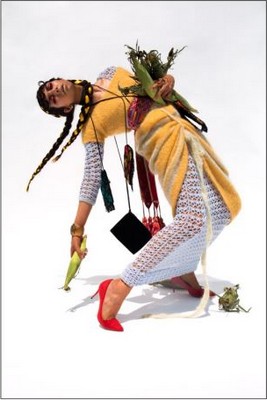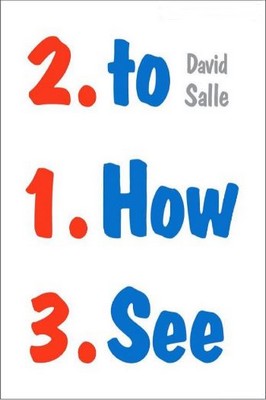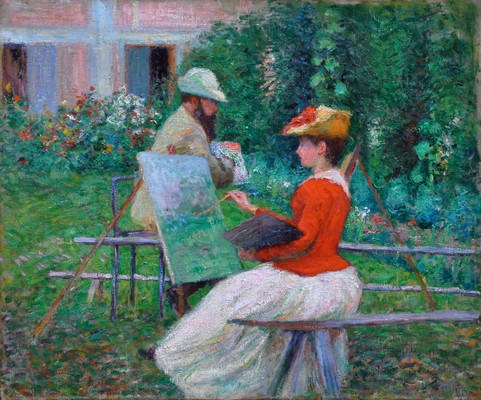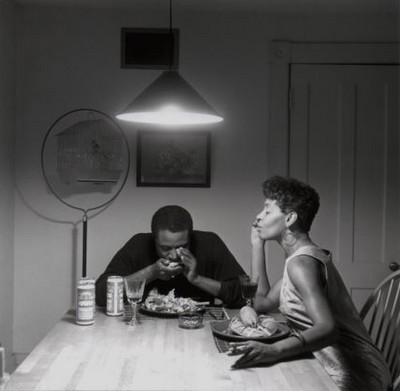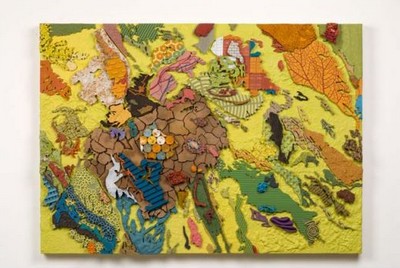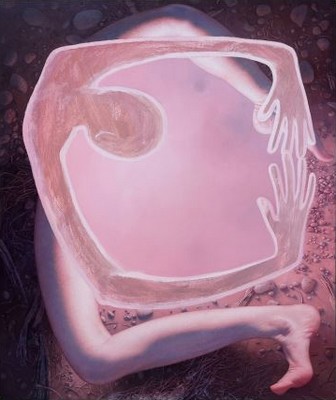Gideon Rubin: The Sun Also Rises
Ryan Lee Gallery, New York
November 11 – December 22, 2021
Ryan Lee presents The Sun Also Rises, the gallery’s first exhibition of work by the London-based painter, GIDEON RUBIN. Rubin is known for painting faceless figures and ambiguous landscapes that are familiar yet fugitive. Using vintage and found photographs as the basis for his paintings, Gideon Rubin reimagines the context surrounding these memory fragments, drawing the viewer into recognizable scenes that refuse resolution and leave the narrative and its protagonists deliberately nebulous. Through the application and erasure of paint, Gideon Rubin says, “details are lost, but a new identity appears.”
Gideon Rubin considers himself a portrait painter, but his paintings are less about an individual sitter than his perception of the world. He turns his attention to pops of strategically placed color and points of contact: “I focus on the edges, where colors, shapes and tones touch each other,” he says. In works such as Blue Jeans (2021) and White Shirt (2021) Gideon Rubin’s lone figures seem lost in moments of contemplation, but the absence of facial features obscures access to definitive meaning. Rubin confesses that he enjoys cultivating this deliberate incompleteness; the resulting images are painterly snapshots of moments in time that appear both commonplace and particular.
All of the paintings in The Sun Also Rises were produced during the height of the pandemic in London, and the landscape images in particular provided Gideon Rubin with “a comforting sense of escapism,” he said. In Boat (2020) and Untitled (2021) Gideon Rubin’s solitary figures seem to stare out at the nature that surrounds them—the blue of a body of water, and wild forest greenery, respectively. Though each of these landscapes is abstracted—into loose layers of blue and energetic bursts of green—and neither reveals itself as a specific location, they are meditations on the role of place in Gideon Rubin’s own practice. “Over the past year or two, we all had to reflect on our relationship towards our environment – the landscape, or lack thereof. This relationship, between experience and the memory of it, between painting a boat and going out on a boat, became the backdrop to a very productive artistic isolation.”
GIDEON RUBIN
Gideon Rubin (b. 1973 in Tel Aviv, Israel) frequently deals with the subjects of memory, history and identity - each painting is a fragment of a larger story, a moment in time. Working from photographic source material, Gideon Rubin voraciously hunts for old film stills and vintage photographs, scavenging for images on the Internet for each new work.
Gideon Rubin studied at the School of Visual Arts in New York before getting his M.F.A. from University College London - Slade School of Fine Art. He lives and works in London.
His work has most recently been the subject of important solo exhibitions at the Rubin Museum (2020), the Freud Museum, London (2018), the Chengdu MoCA (2016), the San Jose Institute of Contemporary Art (2016), and the Herzliya Museum of Contemporary Art (2015), among others.
Gideon Rubin is represented in prominent public collections worldwide including the Collezione Fondazione San Patrignano, IT; Fondation Frances, Senile, FR; Herzliya Museum for Contemporary Art, Herzliya, IL; McEvoy Foundation for the Arts, San Francisco, CA; Museum Voorlinden Collection, NL; Rubin Museum, IL; Ruinart Collection, Reims, FR; The Seavest Collection, New York, NY; Sender Collection, DE; the Speyer Family Collection, New York, NY and the Zabludowicz Collection, London, UK.
RYAN LEE GALLERY
515 West 26th Street, New York, NY 10001
____________


